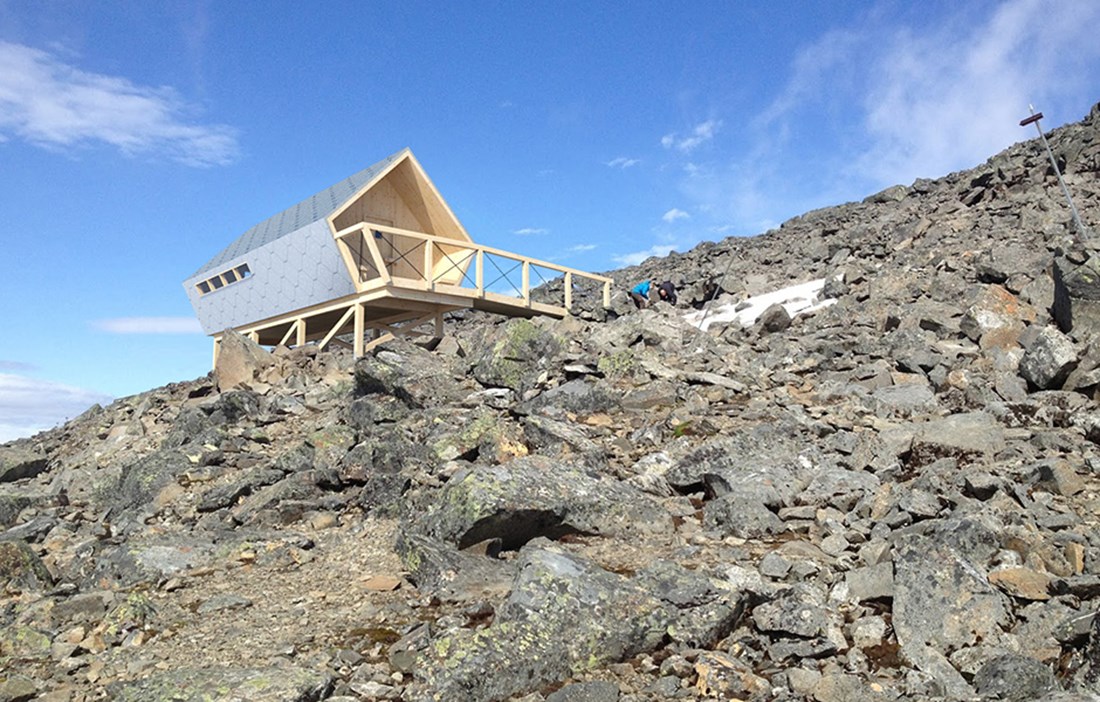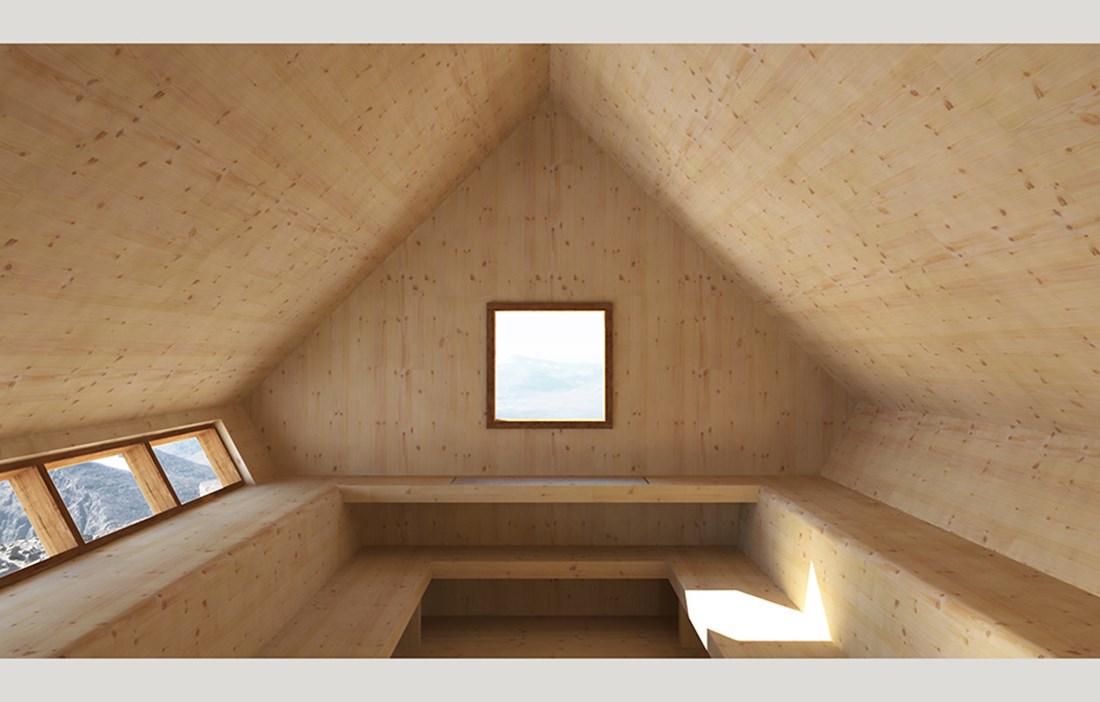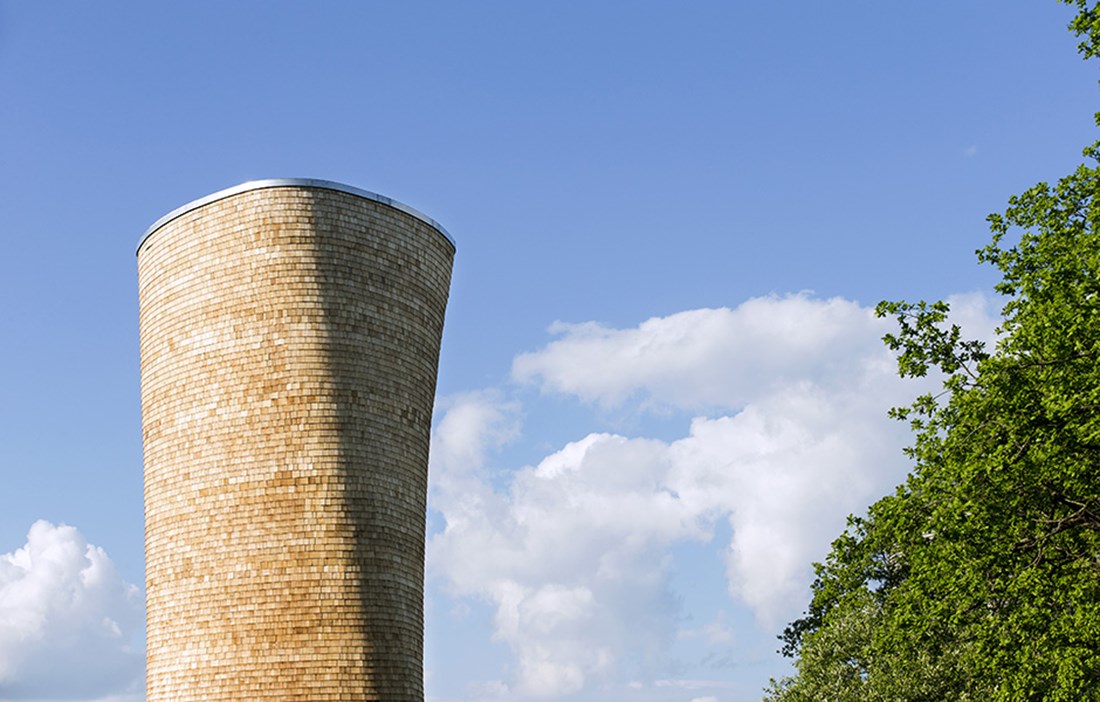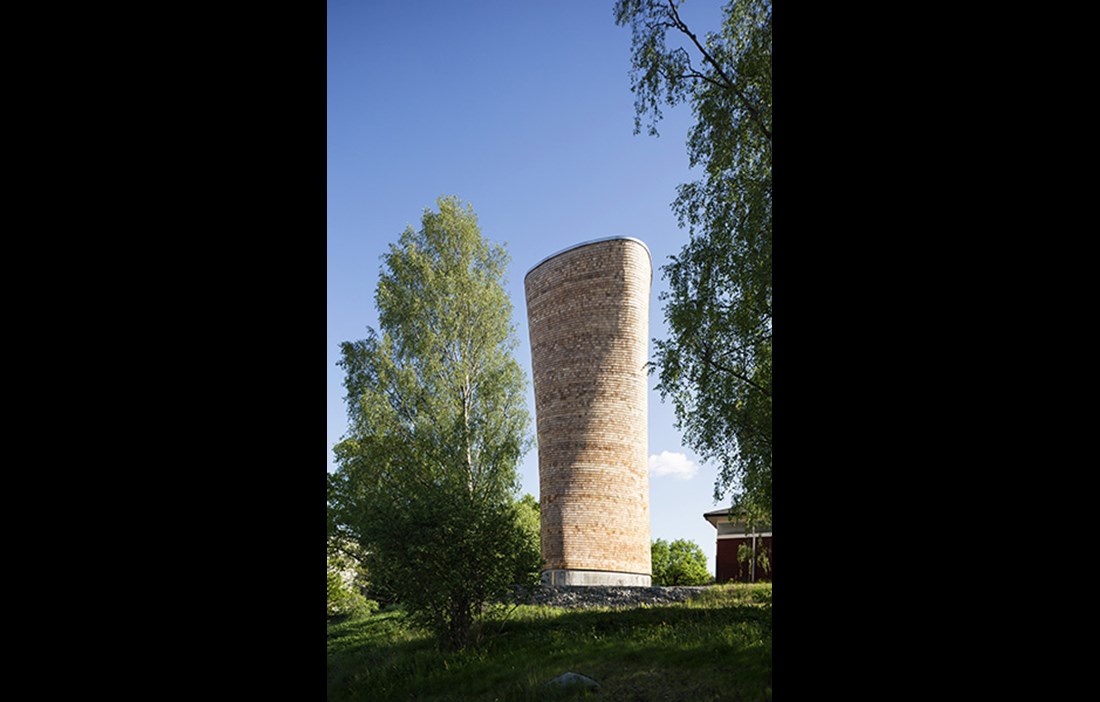IN RECENT YEARS, cross laminated timber, CLT, has adopted an increasingly prominent role in Swedish construction. And there is a great deal in favour of this environmentally smart material that is both strong and has a high load bearing capacity for its weight. Large, stable CLT elements make assembly easy, which also allows construction times to be kept short. In addition, they contribute to a good indoor climate and have high resistance to fire.
The structure of CLT is as simple as it is ingenious. The prefabricated solid panels are made up of planed timber that is glued together, with every other layer rotated 90 degrees for greater dimensional stability. The result is a structural element that is both strong and rigid in relation to its low weight. Thanks to its excellent structural properties, it has a wealth of different applications, including a natural place in floor structures, walls and roof structures. With its strength and dimensional stability, the material encourages flexible architectural solutions, and with high precision CNC cutting a great deal can be prefabricated by the manufacturer, which also saves time on site.
“For me, though, it’s the environmental argument that wins the day. CLT is a renewable raw material whose manufacture and use has a very low carbon footprint, plus it serves as a carbon sink for the whole lifetime of the building.”
So says Mattias Brännström, who has worked on various research and development projects at Stora Enso since 2004. Today he runs the company Dala Massivträ, where part of his work involves planning CLT deliveries for the Swedish market.
THE DEVELOPMENT OF CLT really took off in the late 1990s. Austria led the way in both manufacture and use. When, in 1994, the ban on building high-rise buildings in wood was lifted in Sweden, interest in the material grew here too.
Martinsons is currently the country’s only manufacturer of CLT, producing 7500 cubic metres per year at present. Compare that with the rest of Europe, where production stands at 600,000 cubic metres per year, with Stora Enso as the biggest producer.
“A major advantage of CLT is that you can bring the design drawings directly into the production stream, ‘file-to-factory’,” says Mattias Brännström.
“The manufacturing starts with a master panel, a large sheet that is then processed into smaller elements. With the help of modern CNC technology, we can create precision cut components that fit together perfectly. This precision and simplicity makes CLT a popular material with the carpenters. It’s incredibly easy to work with, and after one panel, you just move onto the next.”
Daniel Wilded is product manager for CLT at Martinsons. He feels we should not just see CLT as a replacement for conventional materials, but as something that actually redefines and simplifies the entire building process.
“The most important argument in its favour is not the material’s properties, but what it can do for the project. Building with CLT involves a whole new way of working, where you have total control over the project, from concept to completion. Logistics, delivery and installation are planned in advance, which results in fewer decisions, and thus fewer errors on site. And because assembly is so fast, it’s also cost-effective.”
Another advantage is that you don’t need to use the very finest grades to get a good product. That could increase the value of the raw material that traditionally is not used when manufacturing solid wood products, which allows the use of a greater proportion of the log, and that in turn means storing even more carbon dioxide. Nor do the solid CLT panels need to be used everywhere. They make an excellent complement to other construction materials in composite structures. This in turn opens up possibilities to optimise the project on a number of different fronts such as cost, fire safety and acoustics.
ONE OF MARTINSONS’ JOBS was to deliver the wooden floor structure for the extension to the Obelisken development on Blekingegatan in Stockholm, designed by Håkan Backlund at Hillstatik.
“In this instance, the weight and flexibility of the wood played a major part in the choice of material. Concrete would have placed too much of a load on the existing property. With the CLT floor structure, we were also able to build new storeys on the existing foundations, i.e. building up from the former roof of the property,” explains Daniel Wilded.
CLT from Martinsons can also be found in the structural frame of Folkhem’s eight-storey block in Sundbyberg, designed by Wingårdh. The 21 metre tall, triangular twisted towers that ventilate the Norra Länken road tunnel in Stockholm are also built around a CLT frame. The towers were designed by Rundquist Arkitekter and manufactured by Martinsons. Both buildings have façades clad in Western red cedar shingles.
Another exciting project is the shelter that Martinsons and Murman Arkitekter are currently putting the finishing touches to near the peak of Kebnekaise, at an altitude of 2000 metres.
“The climatic conditions here, with extreme cold and high winds, really say a great deal about the qualities of the material,” says Daniel Wilded.

























